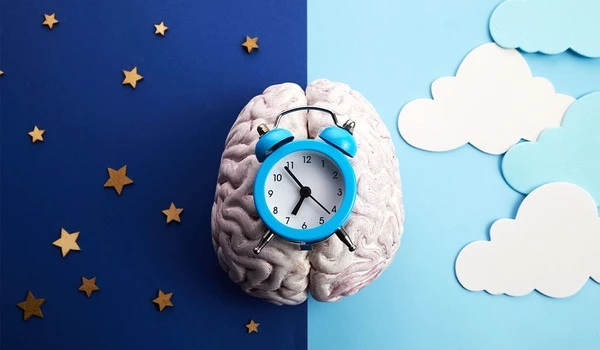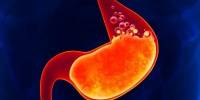New research reveals that neurons in the preoptic hypothalamus – the region of the brain that regulates sleep and body temperature – are rhythmically activated during non-rapid eye movement sleep (NREM). Stress activates these brain cells out of turn, causing “microarousals,” that interrupt sleep cycles and decrease the duration of sleep episodes, according to research from Perelman School of Medicine at the University of Pennsylvania, published today in Current Biology.
While our bodies are at rest when we are asleep, our brains are still very active during four different stages of sleep. In each 90-minute sleep cycle, there are three stages of NREM sleep and one stage of rapid eye movement (REM) sleep. During the first two stages of NREM sleep, brain waves, heartbeat, and breathing slow, and body temperature decreases.
Stage two also includes unique brain activity, called spindles and K-complexes, which are short bursts of activity responsible for processing outside stimuli, as well as for consolidating memory. Stage three of the NREM sleep cycle is when the body releases growth hormone, which is important for repairing the body, keeping the immune system healthy, and further improving memory. During phase three, brain waves are larger, called delta waves.
When you have a bad night of sleep, you notice that your memory isn’t as good as it normally is, or your emotions are all over the place – but a bad night of sleep interrupts so many other processes throughout your body.
Shinjae Chung
REM sleep, which happens in this phase when dreaming normally occurs, is also critical for memory formation, emotional processing, and brain development.
“When you have a bad night of sleep, you notice that your memory isn’t as good as it normally is, or your emotions are all over the place — but a bad night of sleep interrupts so many other processes throughout your body. This is even more heightened in individuals with stress-related sleep disorders,” said senior author, Shinjae Chung, PhD, an assistant professor of Neuroscience.
“It’s crucial to understand the biology driving the brain activity in these crucial stages of sleep, and how stimuli like stress can disrupt it, so that we might someday develop therapies to help individuals have more restful sleep that allows their brain to complete these important processes.”

The researchers monitored the activity in the preoptic area (POA) of the hypothalamus of mice during their natural sleep and found that glutamatergic neurons (VGLUT2) are rhythmically activated during NREM sleep. They also found that VGLUT2 neurons were most active during wakefulness, and less active during NREM and REM sleep.
During microarousals in NREM sleep, VGLUT2 neurons were the only active neurons within the POA, and their signals started to increase in the time before a microarousal. To confirm that active VGLUT2 neurons were indeed the cause of microarousal, the researchers stimulated the VGLUT2 neurons in sleeping subjects, which immediately increased the amount of microarousals and wakefulness.
Next, to illustrate the connection between stress and increased VGLUT2 neuron activation, researchers exposed subjects to a stressor, which increased awake time and microarousals, and decreased overall time spent in REM and NREM sleep.
Researchers also noted increased VGLUT2 neuron activity during NREM sleep in the stressed subjects. What’s more, when researchers inhibited VGLUT 2 neurons, microarousals during NREM sleep decreased, and NREM sleep episodes were longer.
“The glutamatergic neurons in the hypothalamus give us a promising target for developing treatments for stress-related sleep disorders,” said first author, Jennifer Smith, a graduate researcher in Chung’s lab.
“Being able to reduce interruptions during the important stages of non-REM sleep by suppressing VGLUT2 activity would be groundbreaking for individuals struggling with disrupted sleep from disorders like insomnia or PTSD.”
















